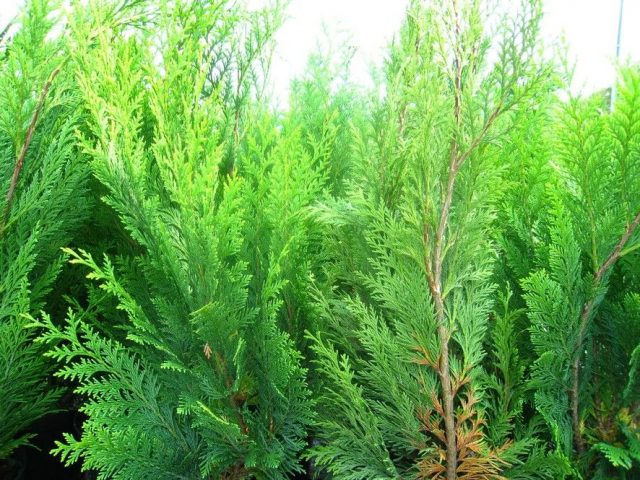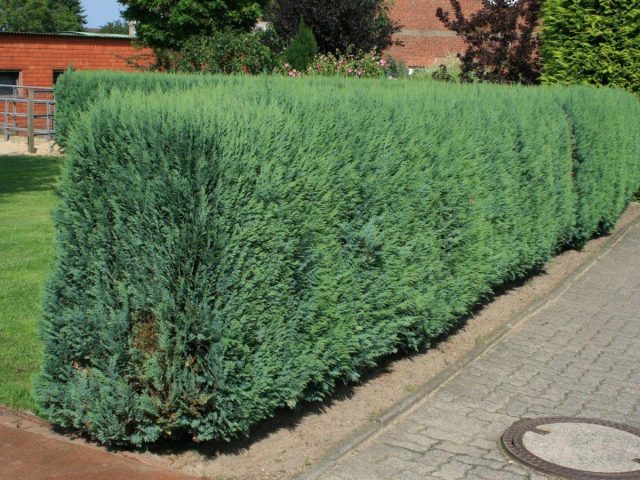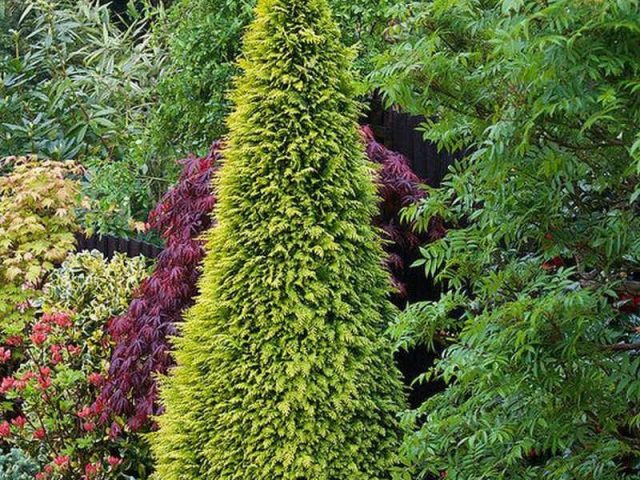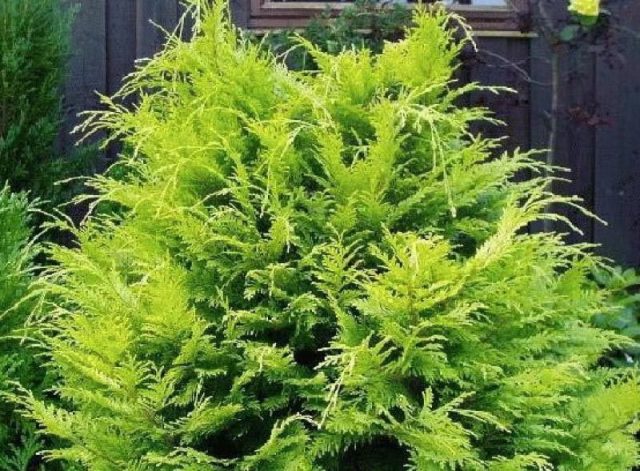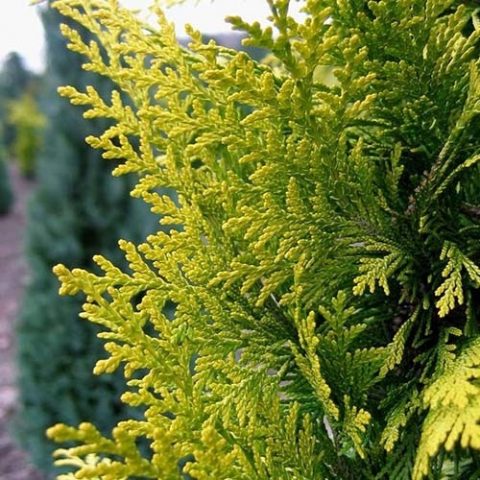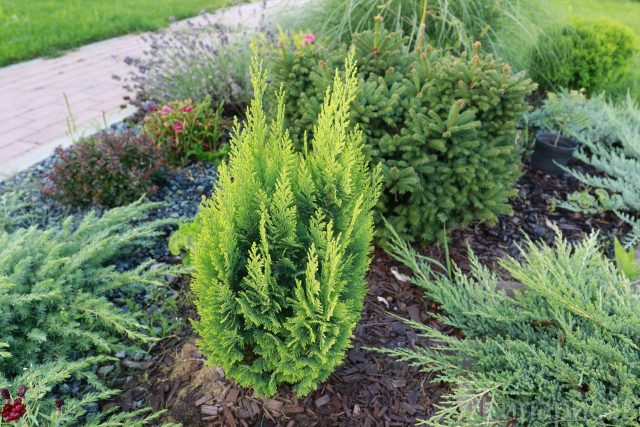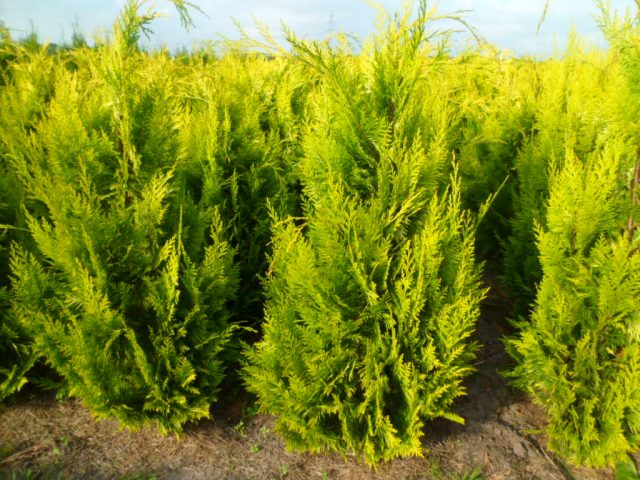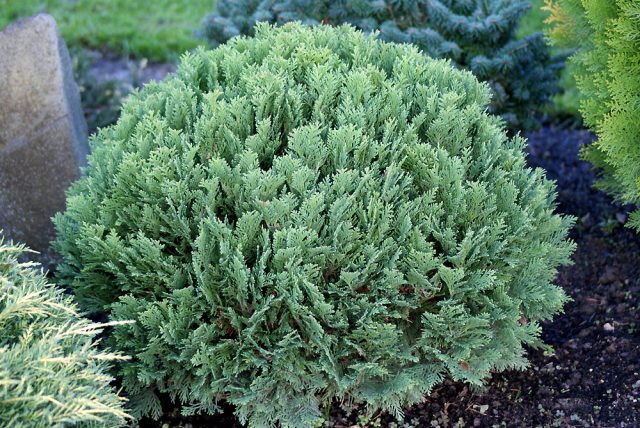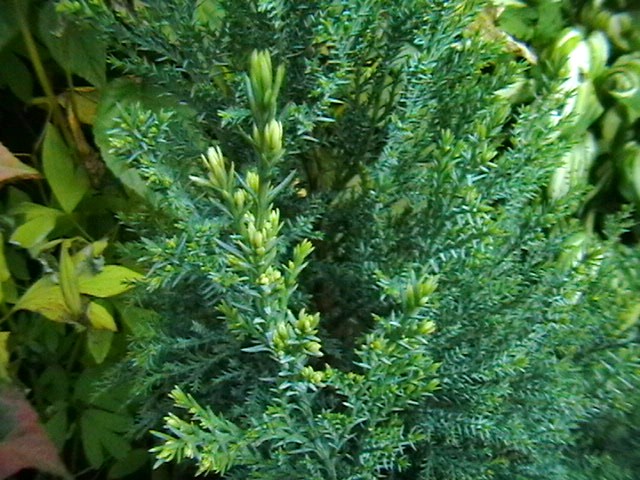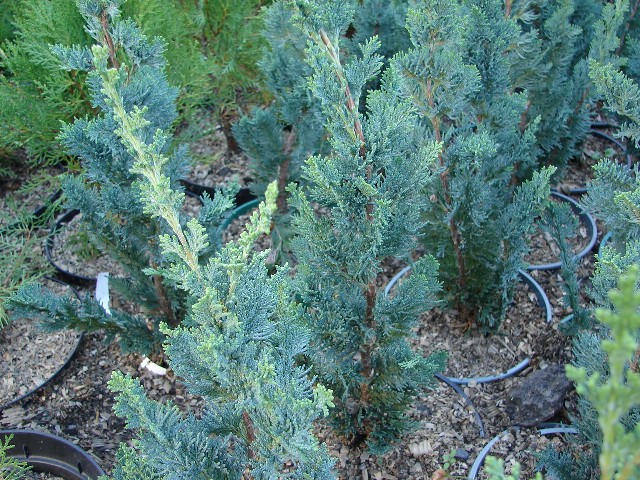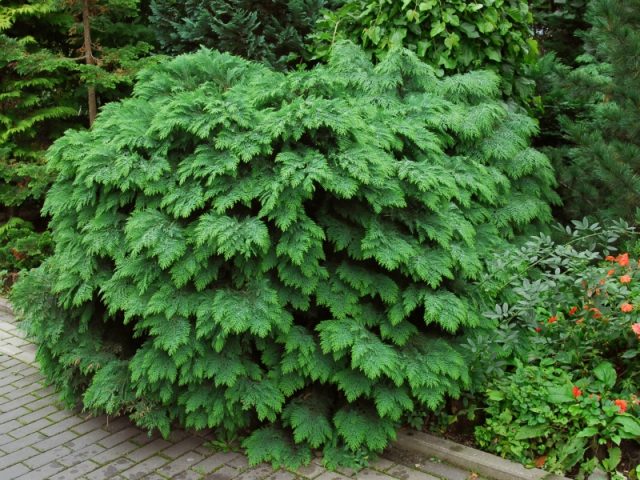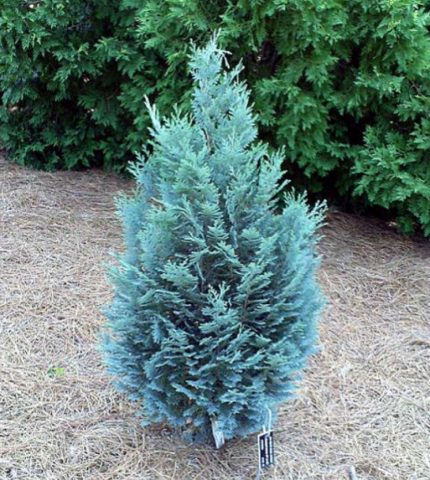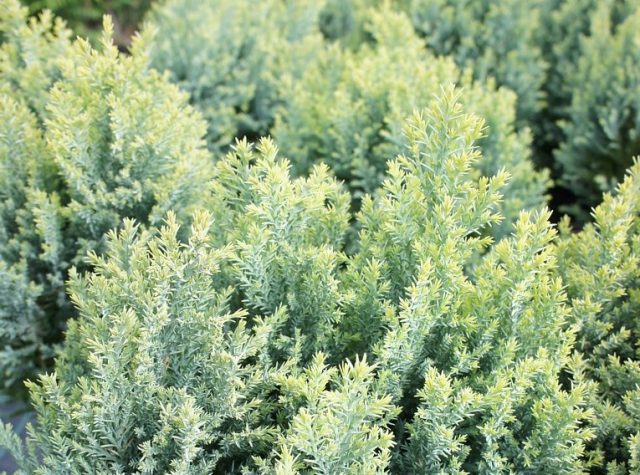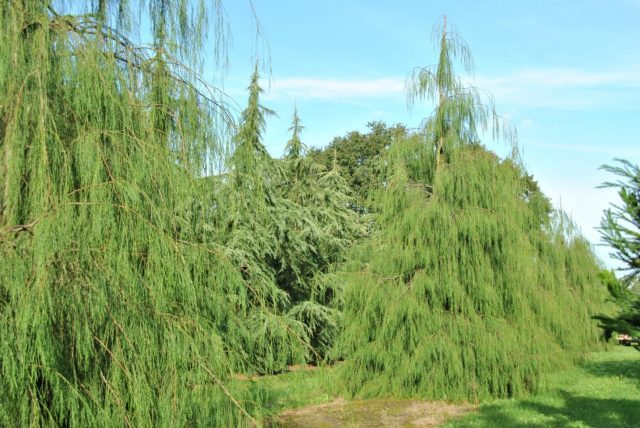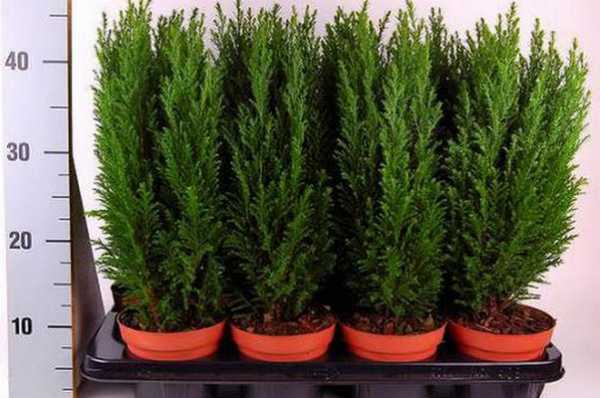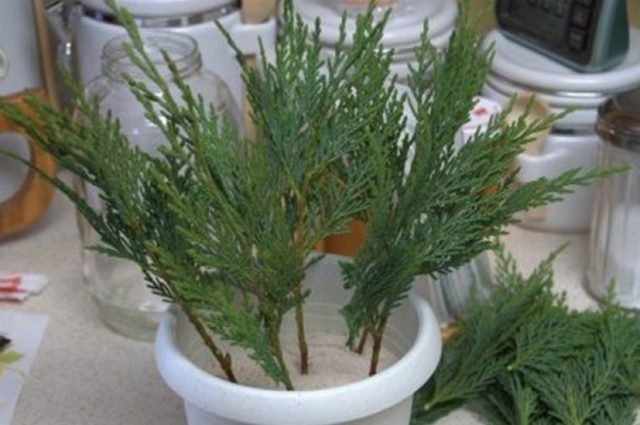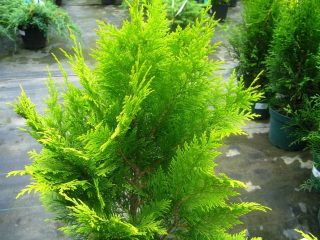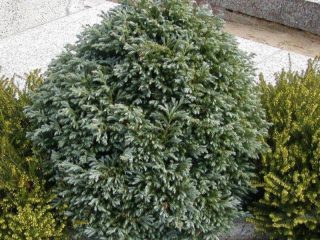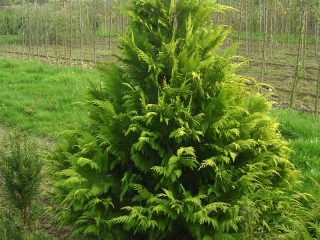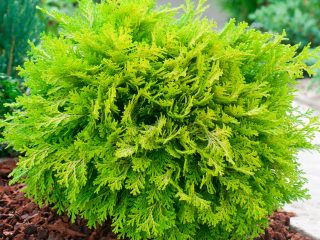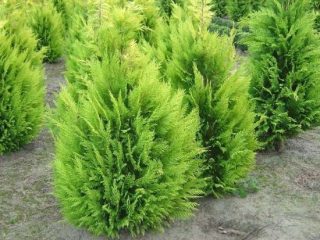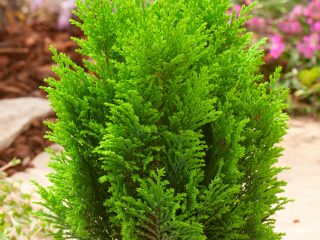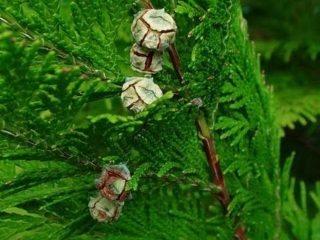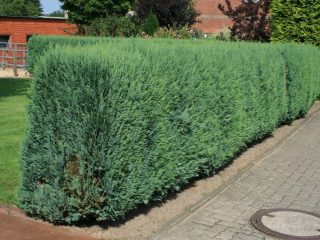Content
- 1 Description of Lawson's cypress
- 2 Lawson's cypress in landscape design
- 3 Lawson cypress varieties
- 3.1 Lawson's Cypress Stardust
- 3.2 Lawson's cypress Alyumigold
- 3.3 Lawson's Cypress Golden Wonder
- 3.4 Lawson Cypress White Spot
- 3.5 Lawson Elwoody Cypress
- 3.6 Lawson's cypress Columnaris
- 3.7 Lawson's cypress Yvonne
- 3.8 Lawson Minim's Cypress
- 3.9 Lawson's Cypress Snow White
- 3.10 Lawson's Cypress Hanging
- 3.11 Lawson's Cypress Mini Globe
- 3.12 Lawson Cypress Pelts Blue
- 3.13 Lawson's cypress Globoza
- 3.14 Lawson's Cypress Cream Glow
- 3.15 Lawson's Cypress Imbricate Pendula
- 3.16 Lawson's Cypress Sunkist
- 4 Lawson cypress planting rules
- 5 Lawson cypress care
- 6 Reproduction
- 7 Features of growing Lawson's cypress in the Moscow region
- 8 Lawson cypress disease
- 9 Reviews of Lawson's cypress
- 10 Conclusion
Many lovers of ornamental plants like to plant evergreen conifers on their site: thuja, cypress, fir, juniper. Such crops provide a wonderful backdrop for flowering plants and shrubs during the warmer months, and in winter they add color to the dull black-and-white landscape of a snow-covered garden. One of the most beautiful conifers often used in garden architecture is Lawson's cypress.
This species has a large number of different varieties, due to which it is widely used in landscape design.
Description of Lawson's cypress
Lawson's cypress is native to California, North America. Occurs on mountain slopes, in river valleys. The main characteristics of the Lawson cypress (Chamaecyparis lawsoniana) are shown in the table.
Parameter | Value |
Type of plant | Evergreen conifer |
Adult tree height | Up to 80 m |
Crown shape | Pyramidal, conical |
Needles | Green in color, needle-like in young trees, scaly in adults |
Branches | Flat |
Bark | Brownish red, sometimes dark brown, almost black |
Root system | Horizontal, surface |
Cones | Small, spherical. As they mature, their color changes from green to light brown with a gray waxy bloom. Each bud contains 2 flaked seeds |
Lawson cypress height
The height of the Lawson cypress directly depends on the place of its growth. Under natural conditions in their homeland, in California and Oregon, trees often reach a height of 70-75 m. In our country, this plant can reach a height of no more than 20 m. A significant part of the cultivated varieties are much lower. Decorative forms of Lawson's cypress grow no more than 2-3 m.
Winter hardiness of Lawson cypress
Lawson's cypress does not tolerate cold very well, therefore, it can be grown on the territory of Russia only in the southernmost regions. These trees are sensitive not only to the ambient temperature, but also to the climate in general. In addition, the plants need good maintenance.
Lawson's cypress in landscape design
Due to its beautiful appearance and plastic crown shape, Lawson's cypress is often used in landscape design. Usually it is formed in the form of geometric shapes:
- cone;
- pyramids;
- spheres.
They can be used both in single plantings and in groups, for example, to decorate an alley with a number of tree columns. Often, Lawson's cypress is used to form hedges. Dwarf varieties are great for decorating rock gardens. The pleasant green, yellow, blue and gray colors of the Lawson cypress needles are an excellent backdrop for flowering plants and bushes.
Lawson cypress varieties
Lawson's cypress (Chamaecyparis Lawsoniana) has quite a few varieties. They differ from each other in size, shape of the crown, color of the needles. The most popular Lawson cypress varieties and their descriptions are presented below.
Lawson's Cypress Stardust
Lawson's cypress Stardust (Chamaecyparislawsoniana Stardust) is a selection of British scientists. Bred in 1900. It is a straight evergreen coniferous tree with a dense pyramidal crown. By the age of 10, its height can reach 2 m, an adult tree grows up to 8-10 m. The growth rate is 20-25 cm per year. The color of the needles is yellow-green, with a golden tint, the tips of the scales are often brown.
Planting and caring for Lawson's Stardust cypress tree (pictured) is easy. It can be grown outdoors in the southern regions of Russia. Average frost resistance. Prefers acidic soils with a pH of 5 to 7, fertile, moderately moist and well-drained. It is widely used in rock gardens, mixborders, can be grown in containers for indoor installation, on terraces, galleries, halls of buildings.
Lawson's cypress Alyumigold
Lawson's cypress Alumigold (Chamaecyparis lawsoniana Alumigold) is an evergreen coniferous tree, reaching a height of about 3 m by the age of 10. The crown shape is correct, conical. The branches are straight, young scales are yellowish, later they turn bluish-gray.
Average frost resistance. It can be grown outdoors only in the southern regions of Russia. Grows well on moderately moist fertile soils and loams. Can grow on limestone soil. Poor drought tolerance. Resistant to gas pollution, can be used for landscaping streets and industrial areas.
Lawson's cypress Alumigold is planted for decorative purposes both in a group for decorating alleys, paths, creating hedges, and individually.
Lawson's Cypress Golden Wonder
Lawson's cypress Golden Wonder (Chamaecyparis lawsoniana Golden Wonder) appeared in 1963 as a result of the work of Dutch breeders. It is an evergreen coniferous tree with a crown shape in the form of a wide cone formed by fan-shaped branches. The top and ends of the shoots tend to hang down. By the age of 10, the tree reaches a height of 2 m. The needles are scaly, greenish-yellow with a golden tint.
Low frost resistance, can only be grown with shelter for the winter. It is undemanding to the composition of the soil, but it grows better on loams or fertile soils with a sufficient level of moisture.
Lawson Cypress White Spot
Lawson's cypress White Spot (Chamaecyparis lawsoniana White Spot) is an ornamental evergreen coniferous tree. Sometimes grown as a shrub. The shape of the crown is narrow, columnar, the branches grow straight up. The scales are green with white tips. Reaches a height of 5 to 10 m by the age of 10.
It is frost-resistant, in the southern regions of Russia it can be grown in open ground without shelter for the winter. It grows well on fertile soils, loams, can grow on calcareous soils with a sufficient level of moisture. Drought does not tolerate well.
Lawson Elwoody Cypress
Lawson's cypress Elwoodi (Chamaecyparis lawsoniana Ellwoodii) was bred in 1929 in England. It is a slow growing variety, rarely reaching 1.5 m in height by 10 years. The shape of the crown is columnar, in the form of a wide cone. The needles are thin, dark blue-blue or blue-steel color.
Winter hardiness is rather weak, it is recommended to shelter the plant for the winter, even when growing it in the southern regions of Russia. Prefers moderately moist light soils, fertile or loamy, with a neutral or slightly acidic reaction. Can grow in alkaline soils. In landscape design, it is used to decorate flower beds, alleys, paths, single plantings or group, to create hedges.
Lawson's cypress Columnaris
Lawson's cypress Columnaris (Chamaecyparislawsoniana Columnaris) is an upright evergreen coniferous tree. By the age of 10 it reaches a height of 3-4 m. The crown is narrow, columnar. Formed by thin frequent vertically growing branches. The scales are light blue, appressed.
Good frost resistance, one of the highest for Lawson cypress trees. In the southern regions of Russia, it can be grown without shelter for the winter. It is undemanding to the composition of the soil, prefers loose fertile and loamy soils, but it can grow on calcareous soils. Requires constant soil moisture, does not tolerate drought. In landscape design, it is traditionally used for hedges, but it can also be planted individually.
Lawson's cypress Yvonne
Lawson's cypress Ivonne (Chamaecyparislawsoniana Ivonne) is an evergreen coniferous tree that grows up to 2.5 m by 10 years. The shape of the crown is regular, conical, the branches are straight, fan-shaped. The needles are scaly, golden or yellow, in the shade it becomes light green.
Frost resistance is quite high, in the south of Russia it can be grown without shelter for the winter. Prefers light fertile soils, moderately moist. Sensitive to overgrowth and turfing of the trunk circle, requires loosening. In landscape design, it is usually used as a color element in collective plantings.
Lawson Minim's Cypress
The Lawson Minim Glauk cypress (Chamaecyparis lawsonianaminimaglauca) is a compact coniferous tree. By the age of 10 it reaches a height of 1.5 m. The shape of the crown is wide and round. The twigs are thin, twisted. The needles are scaly, small, blue or bluish-green, matte.
Good frost resistance, but a place protected from the north wind is required for cultivation. Loose, fertile or loamy soils with sufficient moisture levels are preferable. Drought does not tolerate. Planted individually and in groups.
Lawson's Cypress Snow White
Lawson's Cypress Snow White (Chamaecyparis lawsoniana Snow White), or, as it is also called, Snow White, is a short coniferous tree that looks more like a shrub. It grows up to 1-1.2 m. The crown is dense, oval or broadly oval. The needles are dense, scaly, of various colors. Young needles at the ends of the shoots are bright green, closer to the middle, a bluish tint appears in color, and at the base - silvery.
Good winter hardiness, can be grown in southern Russia, needs shelter for the winter only in the first year after planting. It is undemanding to the composition of the soil with a sufficient amount of moisture. It is grown both outdoors and in pots and containers. Lawson's cypress Snow White is used for landscaping rockeries, alpine slides, Japanese-style gardens. Can be used to create hedges.
Lawson's Cypress Hanging
Lawson's cypress Wisselii (Chamaecyparis lawsoniana Wisselii) was bred in Holland relatively recently, in 1983. It is a fairly tall coniferous tree with a narrow crown in the form of a column. Scaly needles, dark green with a bluish or silvery tint.
The frost resistance of the variety is sufficient to grow it in the south of Russia without shelter for the winter. Prefers neutral or slightly acidic soils with a pH level of 5-7, does not tolerate calcareous soils. Requires moderate moisture. It is planted for the decoration of alleys, paths, as part of compositions. Can be grown in containers.
Lawson's Cypress Mini Globe
Lawson's cypress Mini Globus (Chamaecyparis lawsoniana MiniGlobus) is an evergreen coniferous tree that looks more like a shrub with a spherical crown. It belongs to dwarf, by the age of 10 it reaches a height of 1 m. The needles are small, scaly, green in young plants, and in older specimens acquire a bluish tint.
Frost resistance is good, but the first years of life, seedlings must be covered for the winter. Prefers moderately moist, loose fertile soils and loams with a pH level of 5-8. Will not grow on calcareous soils.It is used in landscape design both in individual and group plantings.
Lawson Cypress Pelts Blue
Lawson's cypress Pelts Blue (Chamaecyparis lawsoniana Pelt’s Blue) is a columnar coniferous tree. The shape of the crown is conical, regular. The height of the tree by the age of 10 can be 3 m. The needles are tightly pressed to the branches, bluish-steel in color.
The plant is hardy enough to grow in southern areas without shelter for the winter. Prefers fertile and loamy soils, well moisturized, with an acidity of 5-6.5. As a rule, it does not grow on calcareous soils. Can be used in landscape design as design elements for rock gardens, flower beds, alleys.
Lawson's cypress Globoza
Lawson's cypress Globosa (Chamaecyparis lawsoniana Globosa) is a short, shrub-type coniferous tree. Its height by 10 years can be 1 m. The shape of the crown is round. The needles are green, shiny, with white stripes.
Low frost resistance. Without shelter for the winter, it can only be grown in the south. Prefers neutral and slightly acidic soils with moderate moisture levels. Does not grow on calcareous soils. Used as an element of garden decoration, as part of hedges. Grows well in containers.
Lawson's Cypress Cream Glow
Lawson's Cypress Cream Glow (Chamaecyparis lawsoniana Cream Glow) is a fairly compact coniferous tree with a pyramidal crown shape. Its height does not exceed 2 m by the age of 10. The branches are dense, growing upward. The needles are small, scaly, light green with a golden tint.
It has good resistance to freezing, in the southern regions it can be grown without shelter. It is recommended to plant this variety on drained, moderately moist soils with a neutral or slightly acidic reaction. It is used as a separate decorative element, as well as in group plantings. Can be grown in containers.
Lawson's Cypress Imbricate Pendula
Lawson's cypress Imbricata Pendula (Chamaecyparis lawsoniana Imbricata Pendula) is an original variety of evergreen coniferous tree, characterized by characteristic hanging "weeping" shoots. By the age of 10 it reaches a height of 2 m. The crown is loose, the needles are small, green, glossy.
Average winter hardiness, in the first years after planting, it is recommended to cover seedlings for the winter, even in the southern regions. Grows well in fertile moist soils with a pH of 5-6.5. Can be used for both individual and group plantings.
Lawson's Cypress Sunkist
Lawson's cypress Sunkist (Chamaecyparis lawsoniana Sunkist) is a small shrub-type coniferous tree. Reaches a height of 1.5-1.8 m. The crown is wide, conical or hemispherical. The needles are dense, dark green; closer to the periphery, they acquire a golden hue.
Winter hardiness is good, as a rule, only young shoots freeze slightly. Recommended to grow on moderately moist, neutral and slightly acidic soils. Can grow on calcareous soils. Drought tolerant. It is planted for decorating rock gardens, Japanese gardens, the banks of reservoirs.
Lawson cypress planting rules
All varieties of Lawson cypress are demanding on lighting. Therefore, they must be planted in an open place with sufficient sunlight. For some species, light partial shade is allowed. In addition, most varieties of this tree prefer the following conditions for normal growth:
- Moderately humid climate.
- Neutral or slightly acidic fertile soil or loam.
- Lack of cold northerly winds and drafts.
Pits for spring planting of Lawson's cypress are prepared in advance, in the fall, taking into account the size of the root system of the future seedling. As a rule, a depth of 0.9 m and a diameter of 0.7 m is sufficient.A layer of drainage must be laid on the bottom - broken brick, large rubble or stones. In this form, the pits are left until spring.
In the spring, the seedlings begin to prepare for planting.The containers are spilled with water in advance to facilitate the extraction of the cypress along with the clod of earth. The plants are carefully removed and placed in the planting pits so that the root collar is 10 cm above the ground level. The voids are carefully covered with soil and tamped. Planting is completed with abundant watering with dissolved fertilizer (300 g of nitroammofoska per 10 liters of water). After that, the trunks are mulched with bark, needles or peat.
Lawson cypress care
Lawson's cypress is very sensitive to the state of the trunk circle, it should not be allowed to turn into sod. Therefore, it must be periodically weeded, loosened and mulched. Watering is essential. The average water consumption for each tree is 10 liters per week. Moreover, the cypress must not only be watered at the root, but also sprayed on its crown.
Lawson's cypress growing on fertile soil, as a rule, does not need additional feeding. If the soil is depleted, in the spring and summer, you can make top dressing using a liquid solution of complex mineral fertilizers or a special composition for conifers.
Twice a year, in early spring and autumn, it is necessary to carry out sanitary pruning, removing branches frozen over the winter, broken, damaged and dry. From 2 years old, trees can be shaped in a certain way for a more decorative look of the crown. This procedure is optional.
Reproduction
You can propagate Lawson's cypress by seed or vegetative method. The first is used quite rarely due to the fact that it is long. In addition, when propagated by seeds, only species characteristics are preserved, varietal ones can be lost.
To avoid this, vegetative propagation methods are used, namely:
- cuttings;
- layering.
Cuttings are harvested in spring or early summer. They are cut from young shoots 15-18 cm long. The needles are removed from their lower part and planted in a container filled with a mixture of wet sand and peat. The container is covered with a film, creating a greenhouse microclimate. In such conditions, the cuttings take root in 1-1.5 months, after which they are planted for growing in large containers.
Cuttings can only be obtained from varieties with creeping shoots. One of the side branches is bent to the ground, the cambium is cut at the point of contact with the soil, then the branch is fixed with a wire bracket and covered with soil. This place is regularly moisturized. From the incision, its own root system will begin to develop. In the first year, the cuttings should winter together with the mother plant, and in the spring they are separated and the young shoot is planted in a new place.
Features of growing Lawson's cypress in the Moscow region
The climate of the Moscow region is not intended for growing Lawson's cypress in the open field. Most lovers of ornamental plants plant these trees in flowerpots or special containers, exposing them outside for the summer and putting them indoors for the winter. Compact varieties can be grown on the balcony, not forgetting the need to ensure the temperature and maintain a high level of humidity.
Lawson cypress disease
Lawson's cypress is relatively rare. Most often this is due to a violation of care. Excessive watering or stagnant water in the roots can cause root rot. At the initial stage, you can cure the plant by removing the damaged roots and treating the remainder with fungicides. If the disease has passed to the aboveground part, the plant cannot be saved.
Reviews of Lawson's cypress
Conclusion
Lawson's cypress is a very beautiful decorative coniferous tree. It has many varieties, different in color of needles, size and shape, so any lover of ornamental plants can easily choose the right one. This plant requires good maintenance and cannot be planted outdoors in all regions. Nevertheless, the presence of dwarf forms allows you to have it even at home and grow in almost any region.
